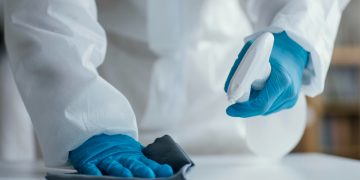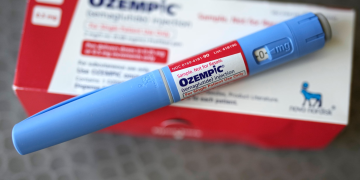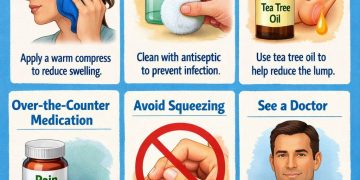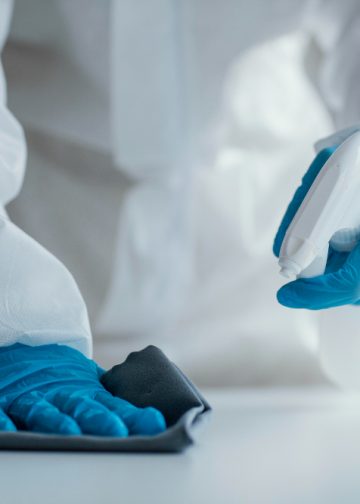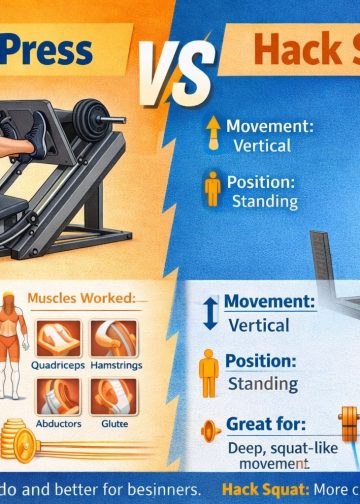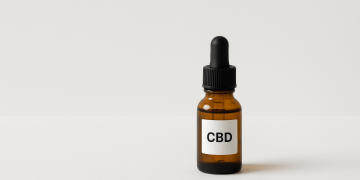Without a doubt, vitamin D has become one of the most troublesome vitamin in the world.
Thanks to the lack of public knowledge about the importance of vitamins in diet the deficiency of this vitamin is increasing day by day.
Mainly bone-related problems (osteoporosis and rickets) occur due to lack of this vitamin as it plays an important role in calcium absorption.
What is Osteoporosis?
Osteoporosis is a disease that causes bone mass reduction either due to old age or lack of certain minerals and calcium in the diet. Women and the elderly are a high-risk group but those who have minimum sun contact could also become deficient.
What causes of osteoporosis?
Certain factors are responsible for osteoporosis.
- Menopause
- Lack of estrogens and androgens
- Old Age
- Lack of Vitamin D in the diet
- Lack of Calcium in the diet
- Genetics
- Excessive alcohol intake
- Certain medications and health conditions
How to prevent osteoporosis?
The possible prevention of osteoporosis can be achieved by,
- Regular Exercise
- Avoid smoking and limiting alcohol
- Eating Bone healthy foods (fruits and vegetables)
- Adding vitamin D, calcium and magnesium in the diet
- Using supplements.
What is Vitamin D?
Chemically, like vitamins A, E, and K, vitamin D is also a fat-soluble vitamin.
It has many types, but in human nutrition only two are important.
- Vitamin D2 (ergocalciferol)
- Vitamin D3 (cholecalciferol)
The basic difference between the two is that vitamin D2 is produced in plant sources by UV radiation and vitamin D3 is produced in animals by sunlight.
A further breakdown shows that D3 is more beneficial than D2. The mechanism of vitamin D3 production is almost the same as photosynthesis. The rays from sun synthesis a compound in the body known as cholecalciferol to form vitamin D3.
Why do you need Vitamin D?
In childhood, almost every parent forced a glass of milk in their child’s diet. Their main understanding was that calcium in milk is needed for stronger bones, but what if there is an additional component that is needed in calcium absorption?
That’s right, vitamin D plays a key role in the absorption of important minerals like calcium, phosphate, and magnesium. Ultimately, it is responsible for the formation and maintenance of strong and healthy bones.
Lack of this vitamin cause rickets (soft and bent bones) in children and osteoporosis (weak and brittle bones) and osteomalacia (softening of bones) in adults.
Vitamin D dose for Osteoporosis
The daily intake of vitamin D varies from person to person and is also dependent upon exposure to sunlight.
Food and Nutrition Board (FNB) developed recommended dietary allowance vitamin D for different age groups.
- 0-12 months – 400 IU (10 mcg)
- 1-13 years – 600 IU (15 mcg)
- 14-18 years – 600 IU (15 mcg)
- 19-50 years – 600 IU (15 mc)
- 51-70 years – 600 IU (15 mcg)
- >70 years – 800 IU (20mcg)
Unfortunately, about 50% of the world population isn’t able to fulfill their vitamin D requirement which leads to complications in later life.
But don’t panic, you can still overcome this deficiency by adding following vitamin D sources in your life.
Natural Sources of Vitamin D
Cod Liver Oil
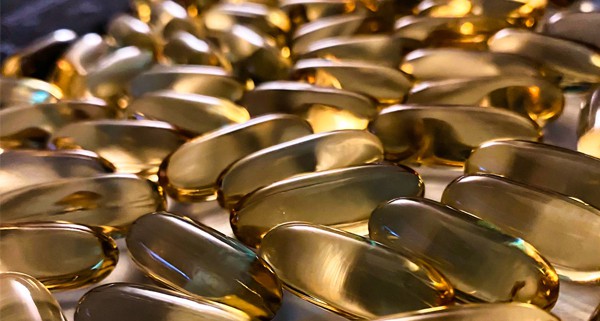
Although a supplement, Cod Liver Oil is one of the best source of vitamin D out there. A single teaspoon (approx. 5 ml) of cod liver oil provides 452 IU (11.3 mcg) of Vitamin D.
This makes up for about 56% of the daily value (DV) for elders and about 75% in adults.
Other than Vitamin D, cod liver oil also provide a high value of vitamin A.
These high amounts of vitamins might sound tempting but before you go and buy cod liver oil, make sure you make an appointment with your doctor first to get their advice.
Knowing little about anything could end up being harmful rather than beneficial.
Oily Fish

All the fatty fish including salmon, sardines, trout, mackerel, and tuna are rich sources of vitamin D. The amount may vary from fish to fish but overall they are an excellent source of this vitamin.
Salmon
This vitamin d rich oily fish have certain varieties. Vitamin D amount varies in all of them. The daily value from 48- 89% per 3 ounces (85 grams) could be obtained from them.
- Canned Sockeye salmon has 716 IU (17.9 mcg) of vitamin D per 3 ounces (85 grams) while the cooked version has 444 IU (11.1 mcg) per 3 ounces.
- Canned Pink salmon has 492 IU (12.3 mcg) of vitamin D while cooked pink salmon has 444 IU (11.1 mcg) per 3 ounces (85 grams)
- Smoked Chinook salmon has 580 IU (14.5 mcg) of vitamin D.
- Cooked Coho wild salmon has 384 (9.6 mcg)
Rainbow Trout
Trout is one of the most popular fish around the world. The people who are fond of seafood must have tried this fish at least once in their life.
The good news is that a variety of trout is rich in vitamin D. This variety is called rainbow trout. A farmed rainbow trout will provide 648 IU (16.2 mcg) of vitamin D per 85 grams (3 ounces) making 81% of DV.
Other than vitamin D, this fish is a good source of vitamin B-12, B-6, magnesium, vitamin A and C.
Tuna:
Canned tuna has gained popularity because of its easy availability and cheap price.
This famous fish is also rich in vitamin D making about 228 IU (5.7 mcg), DV 38%, per 85 gram but due to some harmful effects of this fish (mercury toxicity), it should not be consumed too much.
Other oily fish that have vitamin D in abundance are mackerel (388 IU with 49% DV) and swordfish (564 IU and 70% DV).
Mushrooms
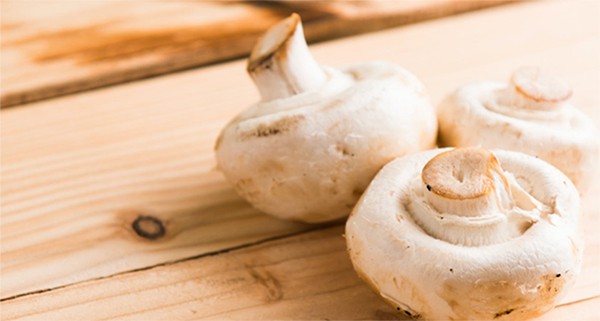
Mushrooms, when exposed to sunlight, are able to synthesis vitamin D just like humans. Unlike humans, it is vitamin D2, not D3. So, it might not be as effective as D3.
Although, the varieties of mushrooms that are treated with UV rays are good sources of D2 providing 316 IU of vitamin D per 35 gram (1/2 cup) making up 40% DV.
Commercially grown mushrooms in dark is a poor source of vitamin D2 as it only contain a minute amount of vitamin.
Egg Yolk

Egg yolks are rich in minerals and vitamins. One large egg contains 44 IU or 6% of the daily value of vitamin D.
As compared to other sources of vitamin D, eggs might not be enough to overcome the deficiency.
The amount of vitamin D is also dependent upon sun exposure, so the hens and eggs exposed to UV light could contain a much higher value of vitamin D than a normal egg.
Fortified Food

By definition, fortified foods are those that originally doesn’t contain certain nutrient unless it is added by an external source.
Many foods are being fortified these days with different nutrients to fulfill nutritional requirements. These also include vitamin D fortified food like the following.
Cereals contain 100 IU or 13% DV per 170 grams. The amount varies from brand to brand
Milk (1%, 2%, non-fat) has 116 IU or 15% DV of vitamin D per cup.
Orange Juice in one cup makes up to 100 IU or 13% DV of vitamin D.
Soy Milk contains 116 IU or 15% DV of vitamin D in one cup.
Conclusion
For better absorption of calcium, it is necessary to add vitamin D in the diet.
Vitamin D will prevent osteoporosis, osteomalacia, and rickets by making bones strong. Sunlight is the best source of vitamin D.
To avoid an abundance of vitamin D in the system, it is good to consult a doctor.
Already taking care of your vitamin D intake? Let us know what worked best for you.






